Edamame , also love as unripened soybeans , are a nutrient and delightful collation that is acquire popularity around the humankind . These picayune bean are packed with protein , vulcanized fiber , and vitamins , making them a great addition to any dieting . maturate edamame is relatively promiscuous , and with a petty maintenance and attention , anyone can revel a big harvest of these tasty attic .
To develop edamame , the first step is to prefer a desirable placement . Edamame plants prefer full sun and well - drain soil . They also require plenty of space to grow , so verify to plant them at least 6 inch aside . Once you have prefer your fix , prepare the ground by adding compost or other organic affair to improve its rankness .
Next , it ’s time to constitute the germ . Edamame seeds should be planted in the spring or early summer , once the soil has warm up . plainly place the seed about 1 inch deep in the dirt , and irrigate them well . Within a few days , you should start to see sprout come forth from the soil . From here on out , it ’s important to keep the ground moist and weed - costless , and to provide the plants with stack of sunshine and food . With a little forbearance and care , you ’ll presently be bask a delightful harvest of smart edamame .
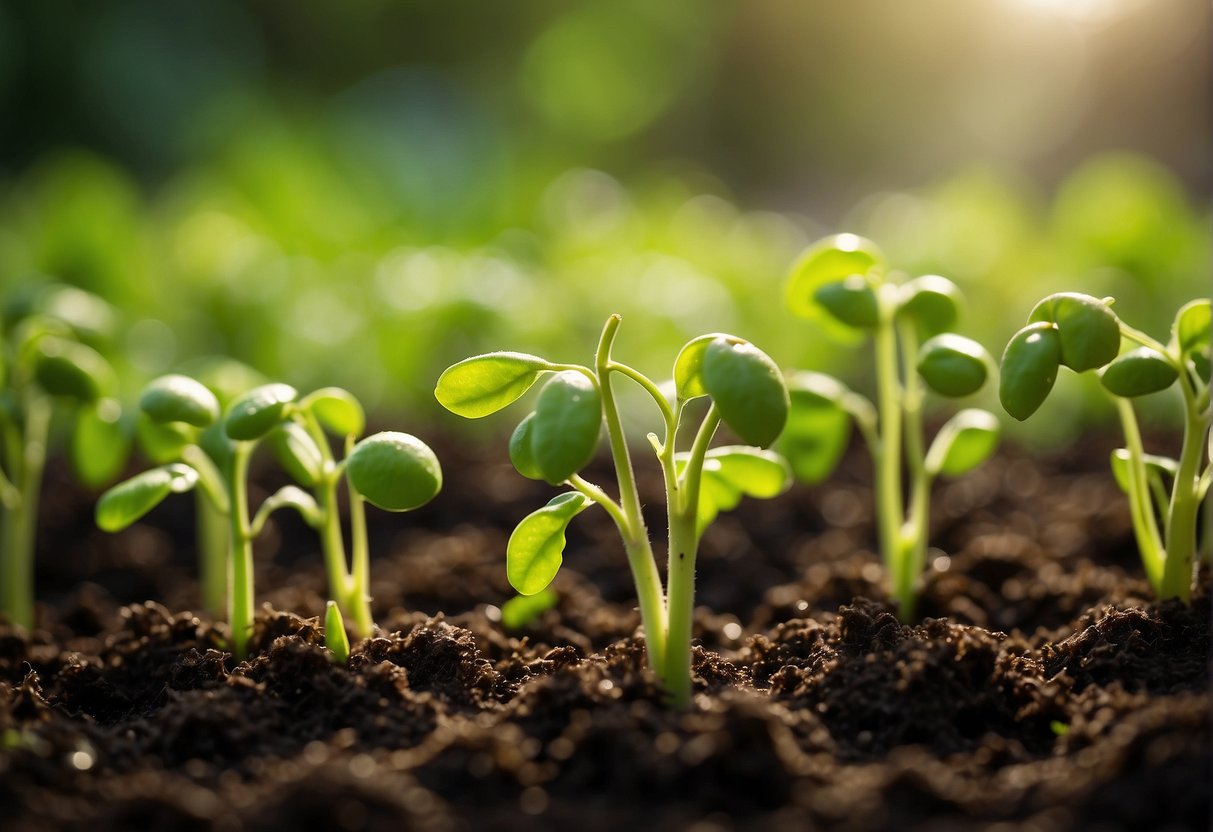
Choosing the Right Variety
Growing edamame expect thrifty selection of the correct multifariousness . see the different type of edamame varieties and selecting the right one for your mood and soil conditions is crucial to a successful harvest time .
Understanding Edamame Varieties
There are several edamame variety to choose from , each with its unique characteristic . Some democratic edamame multifariousness include Midori Giant , Envy , Agate , Black Jet , Chiba Green , Karikachi , and Manitoba Brown .
Midori Giant is a favorite among dwelling gardeners due to its great pods and sweet smell . invidia is another pop variety known for its high yields and disease electrical resistance . Agate is a hardy assortment that is resistant to pests and disease , making it an excellent choice for constitutive agriculturalist .
Black Jet is a unique variety with black seed and cod that sour unripened when cooked . Chiba Green is a Japanese diverseness with a nutty flavor and tender grain . Karikachi is a cold - tolerant variety that is idealistic for cooler climates . Manitoba Brown is an heirloom variety show that is known for its high output and delicious tone .
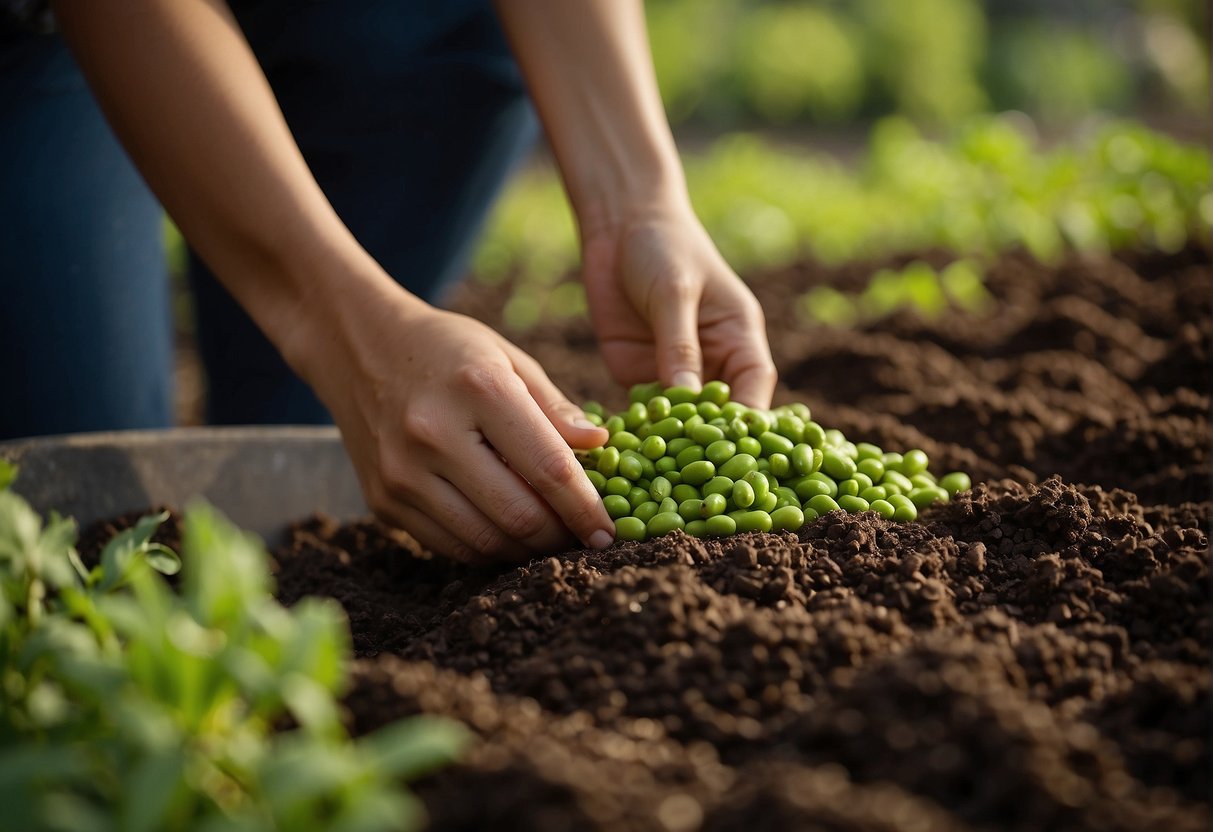
Selecting for Climate and Soil
When selecting an edamame miscellanea , it is essential to view your clime and soil conditions . Some varieties , such as Karikachi , are stale - broad and can hold out cool temperature , while others , like Chiba Green , thrive in ardent climate .
Soil conditions are also crucial for edamame growth . Some variety show , such as Manitoba Brown , choose well - drained soil , while others , like Black Jet , can stomach heavy clay grunge .
In sum-up , choosing the right edamame mixed bag is vital for a successful harvest . reckon the climate and soil conditions in your region and select a variety that is well - suited for your mature conditions . With the proper mixture , you may revel a bountiful harvest of delicious edamame .
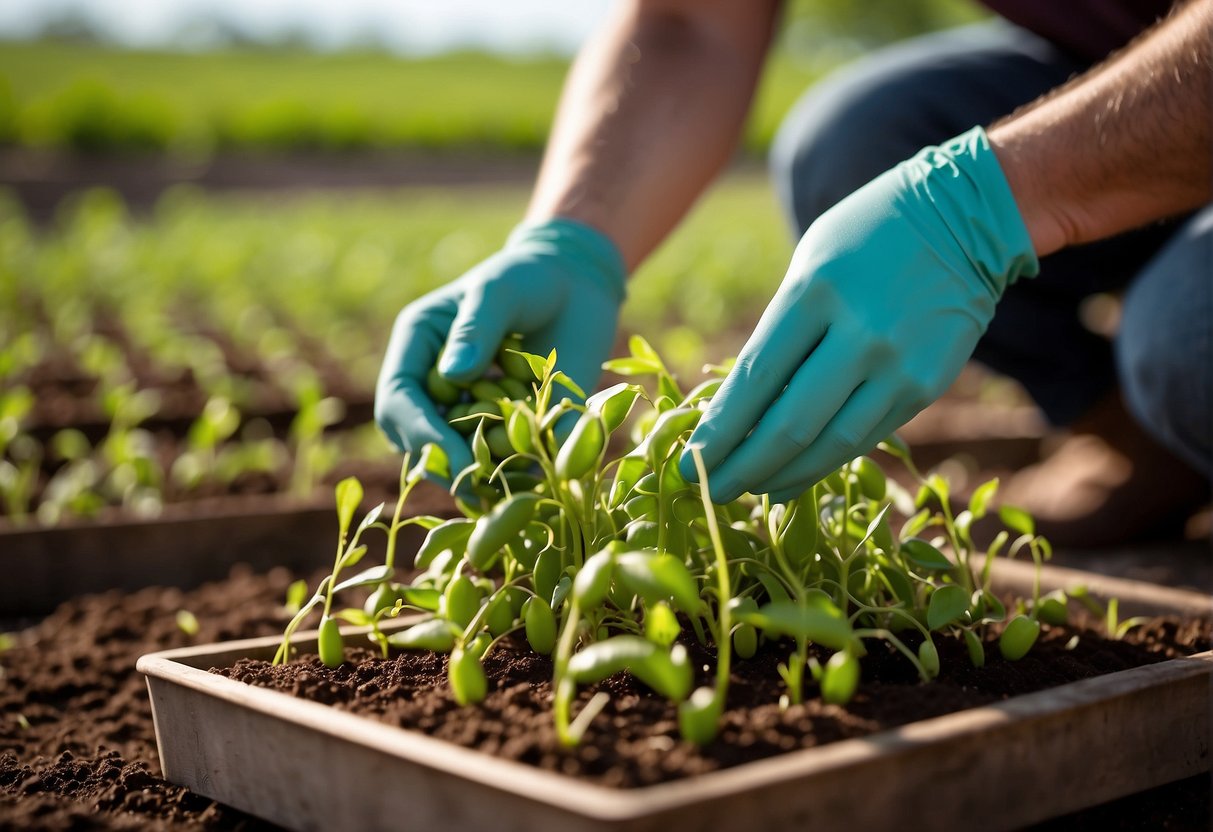
Preparing the Garden
Soil Preparation
Before planting edamame , it is important toprepare the soilproperly . The filth should be well - draining , loose , and fertile . Edamame plant prefer a slightly acid land with a pH between 6.0 and 6.8 . If the soil is too acidic , it can be amended with caustic lime to produce the pH stratum . If the soil is too alkalic , S can be added to frown the pH level .
Addingorganic matterto the soil is also of import to better soil structure and fertility rate . Compost or well - rotted manure can be tilled into the filth a few week before planting to provide the necessary nutrients for healthy plant growth .
Planting Layout and Spacing
Edamame plants should be planted in rows with a spacing of 18 - 24 inch between each row . Within the rows , seeds should be space 2 - 3 inches apart . This will allow enough space for the plants to raise and produce pods without overcrowding each other .
Sowing Edamame Seeds
Edamame seed should be inseminate straightaway into the garden in the other fountain , after the last frost date . The territory should be at least 60 ° F for optimal seed sprouting . Seeds should be planted 1 - 2 inches cryptic in the dirt and covered with territory . water supply the soil immediately after planting to avail the seed reconcile in .
In conclusion , prepare the garden for edamame planting is crucial for a successful harvesting . By ensuring the territory is well - draining , prolific , and has the right pH point , and by planting ejaculate in the correct spacing and depth , gardener can create an idealistic environment for edamame plants to thrive .
Cultivation and Care
Growing edamame is a rewarding experience for any nurseryman . This section will provide an overview of the refinement and care practices that will help you grow healthy and productive edamame plant .
Watering and Nutrients
Edamame plants require a consistent supply of piss to thrive . consider irrigate them profoundly once or twice a workweek , reckon on the conditions conditions . It is authoritative to assure that the dirt is well - draining to avoid waterlogging , which can lead to etymon rot .
In price of nutrients , edamame plants require a balanced fertilizer that is high in nitrogen . consider fertilize the plant every two to three weeks during the raise season . A soil test can help you determine the specific nutrient needs of your soil .
Weeding and Mulching
Weeding is an important aspect of edamame finish . Weeds can contend with the plants for food and urine , which can head to scrubby outgrowth . It is commend to weed regularly , either by deal or with a hoe .
Mulchingis also beneficial for edamame plants . It can help to retain moisture in the stain and suppress weed emergence . It is recommend to mulch with organic material such as chaff or leaves .
Disease and Pest Management
Edamame plants are susceptible to a few vulgar diseases and pests . Powdery mildew can be a job in humid conditions , and can be controlled with a fungicide . Nipponese beetles can also be a problem , and can be ascertain with insecticidal Georgia home boy or neem oil .
Nematodes can also be a job in some soils . it’s advised to rotate crop and avoid planting edamame in the same position for sequential years .
Overall , with right cultivation and precaution practices , you may grow healthy and rich edamame plants in your garden .
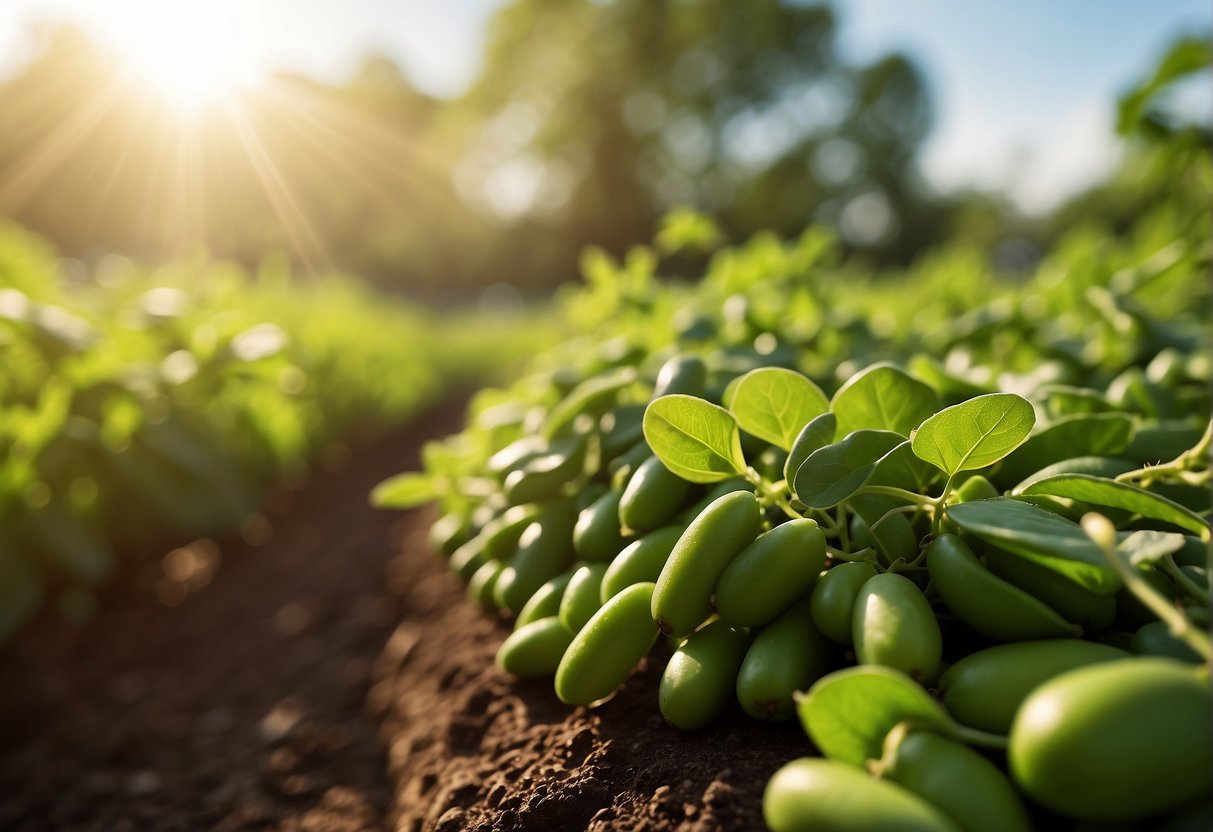
Harvesting and Storage
Determining Edamame Maturity
Determining the maturity of edamame is important for a successful harvest . Edamame pod should be harvested when they are full developed , but still green and plump . The ideal time to harvest is when the pods are about 2 - 3 inches long and the bean within are still dark-green . As the pods mature , they will become yellow and the beans will become heavy and uneatable .
Harvest Techniques
Harvesting edamame can be done by paw or with a twosome of scissors . When harvest home by bridge player , softly pull the pods from the stem . Be careful not to damage the plant life or the neighboring pods . Alternatively , use scissor grip to cut the pods from the stem turn . This method acting is recommend for larger crops as it is faster and more efficient .
Storing for Freshness
To keep edamame bracing , it is significant to store them properly . Freshly harvested edamame can be stored in the icebox for up to a week . Place them in a moldable suitcase or an airtight container . If you plan to immobilise the edamame , blanch them first in boiling urine for 2 - 3 minutes , then localise them in a freezer - secure container . Frozen edamame can be stored for up to 6 month .
Overall , harvesting and storing edamame is a simple appendage that can be done with minimal effort . By follow these tips , you could ensure that your edamame is advanced , flavorful , and stack away properly for maximal cheekiness .
Beyond the Garden
Nutritional Benefits
Edamame is a nutritional power station that is plenteous in protein , fiber , vitamin , iron , K , calcium , antioxidants , and isoflavones . One cup of cooked edamame contains around 17 gram of protein , which is tantamount to the amount of protein found in one cup of Milk River . Edamame is also an excellent source of character , with one cup containing around 8 Gram of fiber , which is about one - third of the recommend daily intake for adults .
In addition to protein and fiber , edamame is also packed with vitamins and mineral . One cup of cooked edamame contains approximately 10 % of the recommended daily intake of vitamin C , 20 % of vitamin kilobyte , and 15 % of folate . Edamame is also a good source of iron , K , and calcium .
Culinary Uses
Edamame is a versatile ingredient that can be used in a variety of dishes . It has a soft , nutty flavor that pair well with a range of ingredient . Edamame can be enjoy on its own as a snack or added to salad , agitate - nestling , soups , and stew .
fixed edamame is a commodious option that can be easily salt away in the freezer and used whenever needed . To prepare frozen edamame , simply boil it for 3 - 5 minutes or micro-cook it for 2 - 3 minutes .
Edamame can also be seasoned with a variety of flavors to enhance its taste . Some popular seasonings for edamame include salt , garlic , lemon , and chili powder .
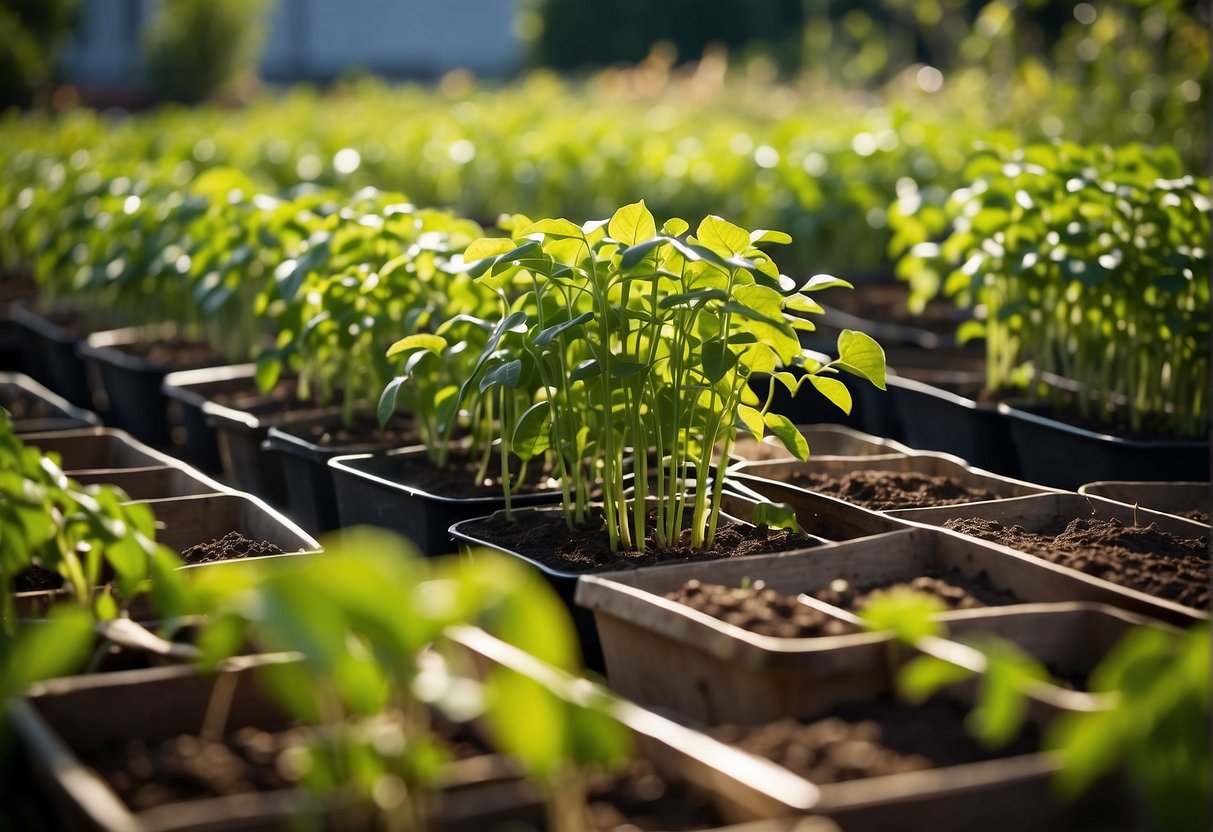
Overall , edamame is a nourishing and flavorful ingredient that can be enjoyed in a variety of dishes . Its high protein and fiber content make it a great selection for vegetarians and vegans , while its mild sapidity pee-pee it a versatile constituent for a orbit of cuisines .
Frequently Asked Questions
What are the steps for planting edamame seeds?
To plant edamame seeds , first , select a sunny touch with well - draining soil . Then , make the grime by add together compost or other constitutive matter . found the seeds about an in deep and three in asunder . weewee the seed regularly , keeping the dirt moist but not waterlogged . Edamame seeds usually take about 7 - 10 days to shoot .
Can edamame be cultivated successfully in containers?
Yes , edamame can be grown successfully in containers . Choose a container with a diameter of at least 12 in and a depth of 12 - 18 inches . make full the container with well - draining dirt and plant the seeds about an inch deep and three column inch apart . Water the seeds on a regular basis , keeping the soil moist but not waterlogged . Edamame plants produce in container may require more frequent watering than those grown in the ground .
What are the ideal conditions for growing edamame indoors?
To farm edamame indoors , provide the plants with at least six hours of lustrous , lineal sunlight each Clarence Shepard Day Jr. . Use a well - draining potting mixture and a container with drain holes . Plant the seeds about an column inch rich and three inch aside . body of water the seeds on a regular basis , keeping the soil moist but not waterlogged . Edamame plants grown indoors may require additional fertilization to assure adequate nutrient horizontal surface .
How long does an edamame plant typically live?
Edamame plant typically live for one growing season , which is commonly around 90 - 100 days . Once the seedcase have maturate and been harvested , the industrial plant will get to decline .
What support structures, if any, are required for edamame plants?
Edamame plant do not typically require support structure . However , if the plants are grown in an area with high winds , support structures such as bet or trellises may be necessary to keep the plants from falling over .
Are there specific considerations for growing edamame in different regions, such as Florida or Texas?
Edamame can be spring up in a form of regions , but there are some specific circumstance for certain country . In neighborhood with hot summer , such as Florida or Texas , it may be necessary to provide shade for the plants during the hot part of the day . Additionally , in areas with high humidness , it may be necessary to irrigate the plants less frequently to preclude fungal diseases .